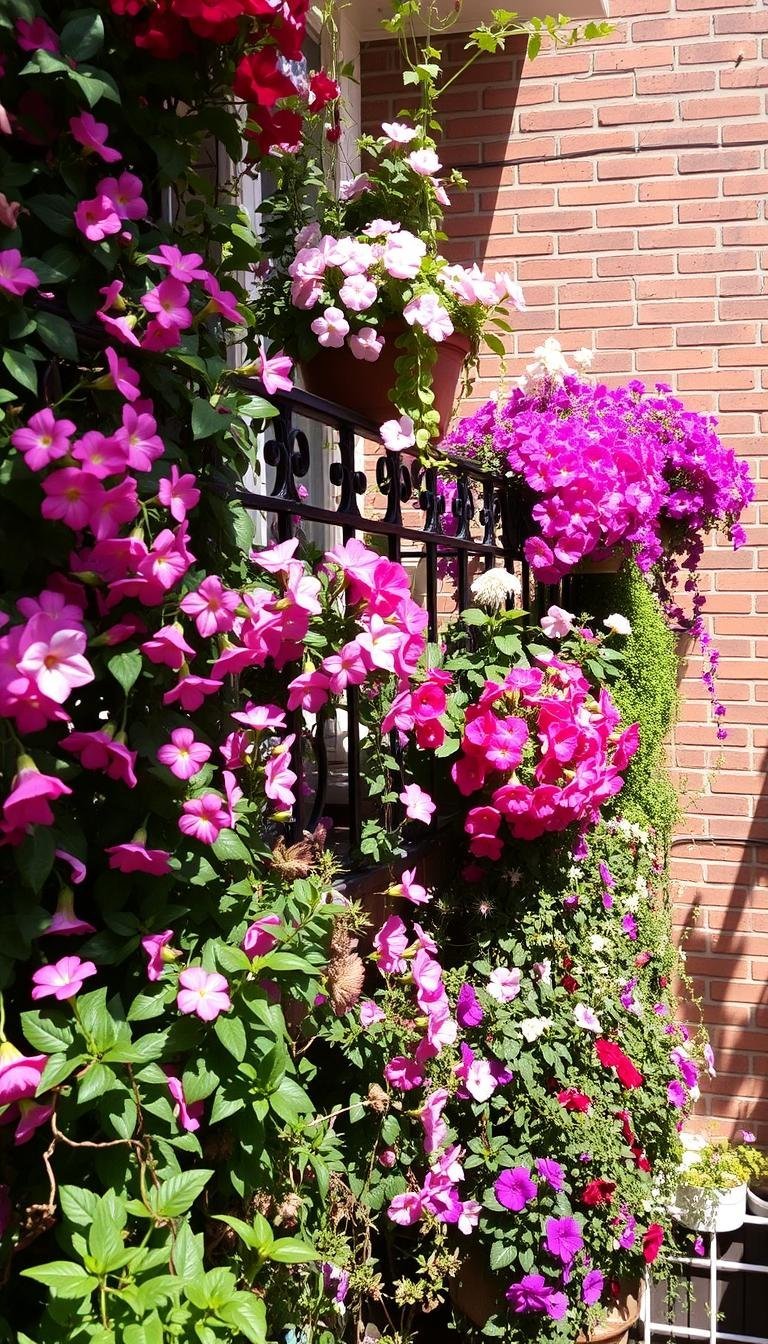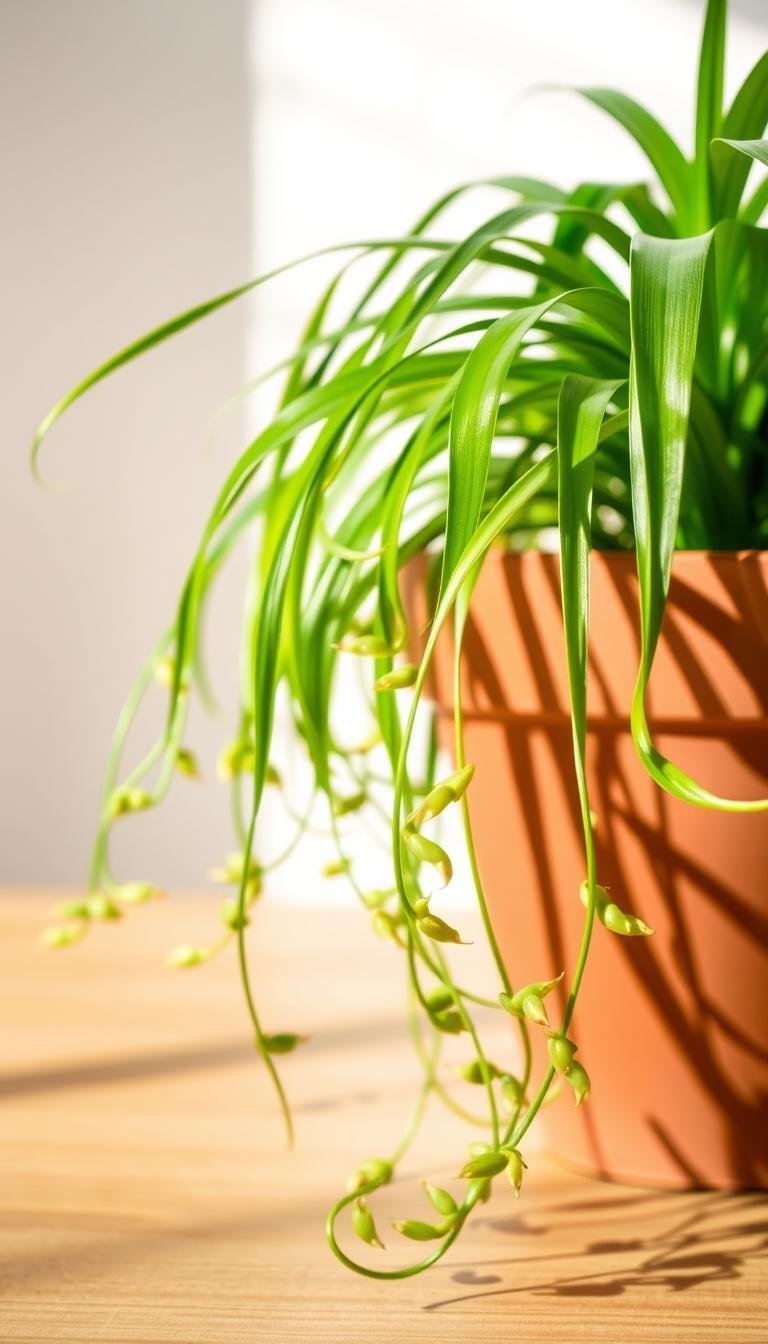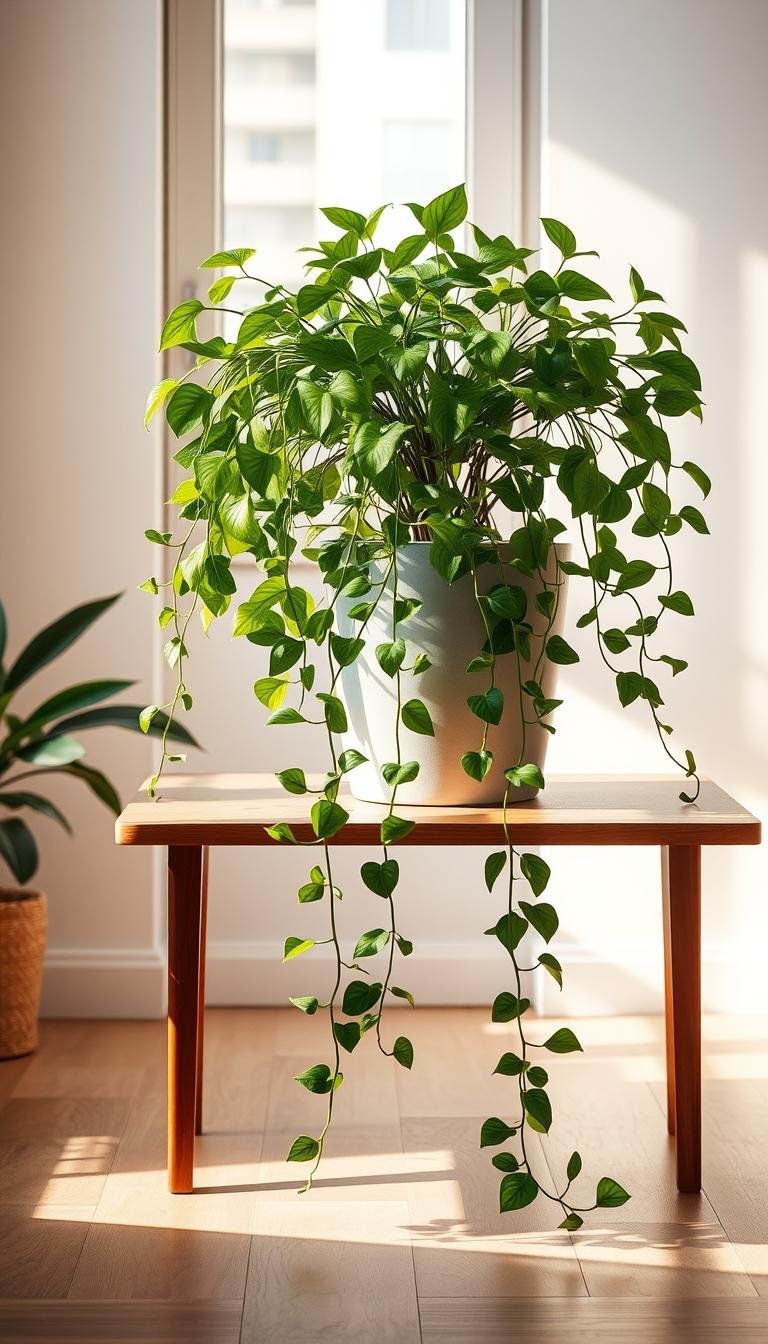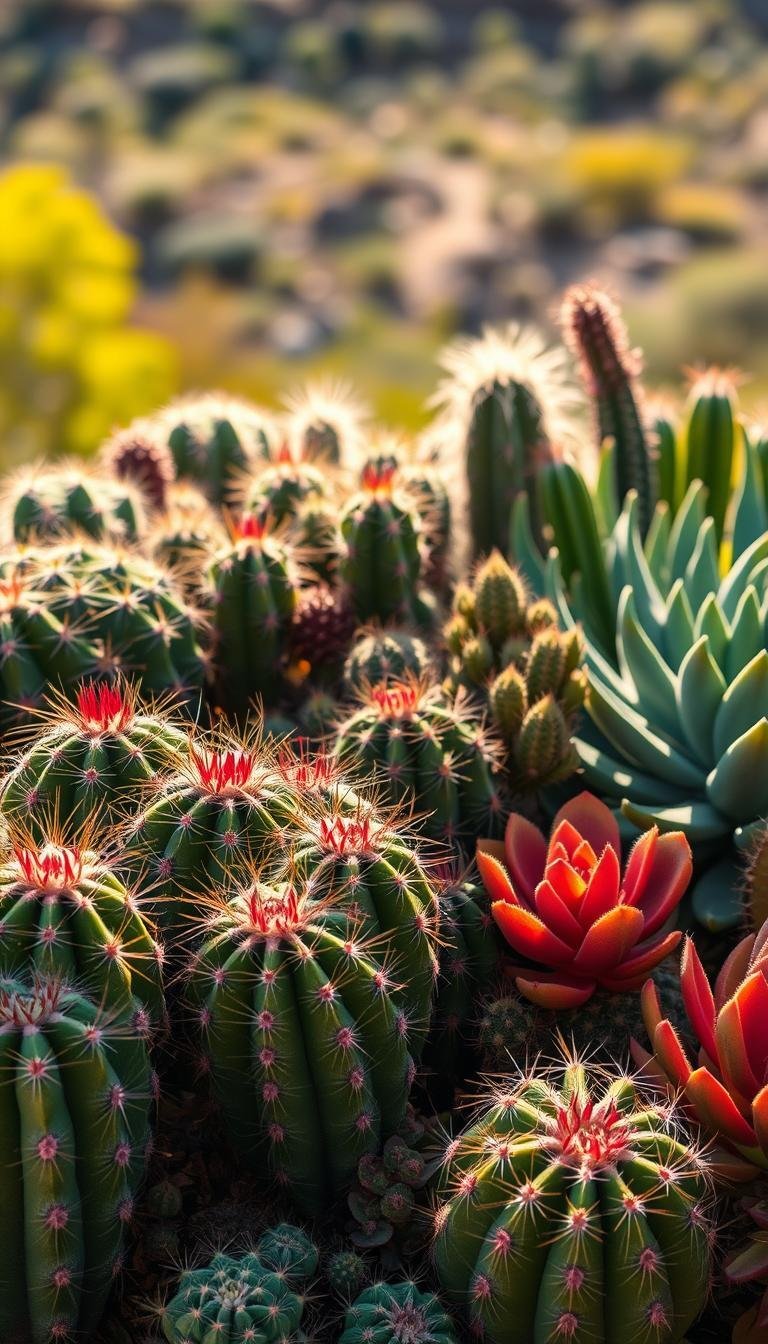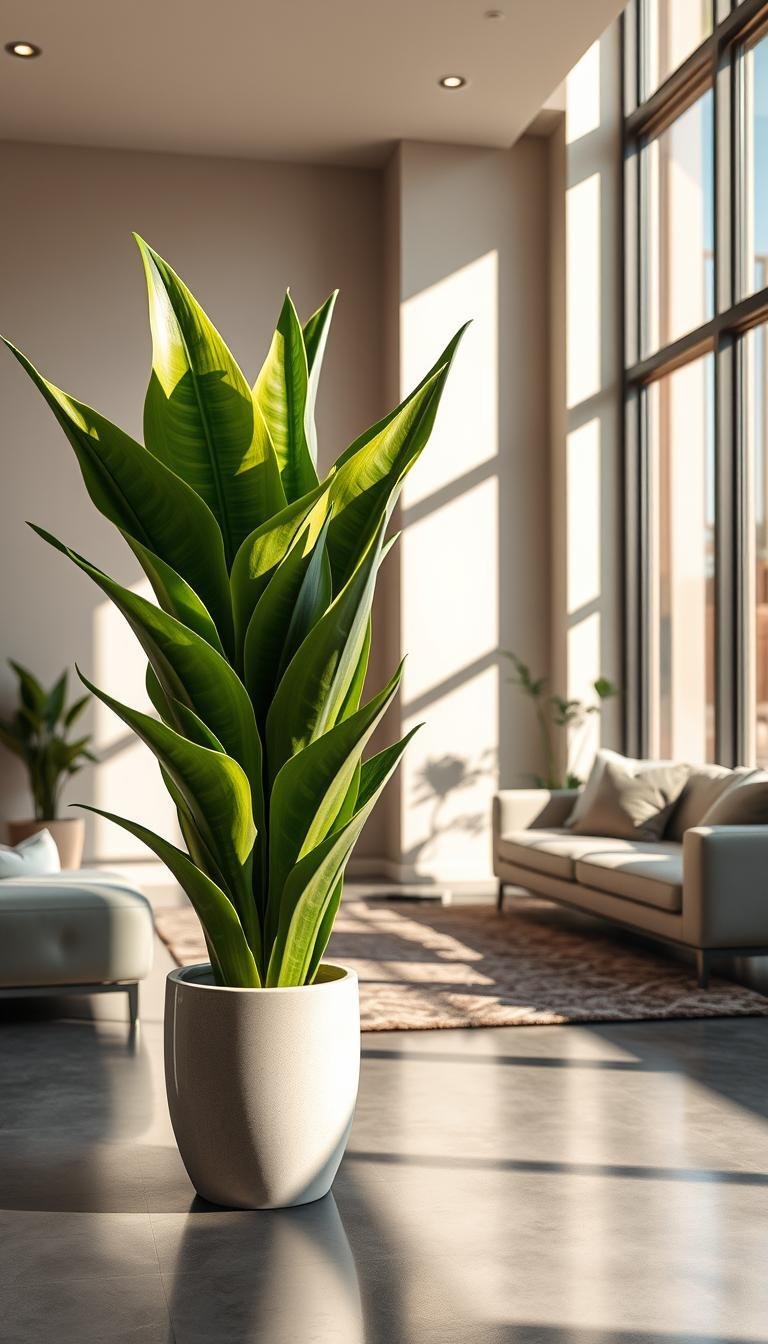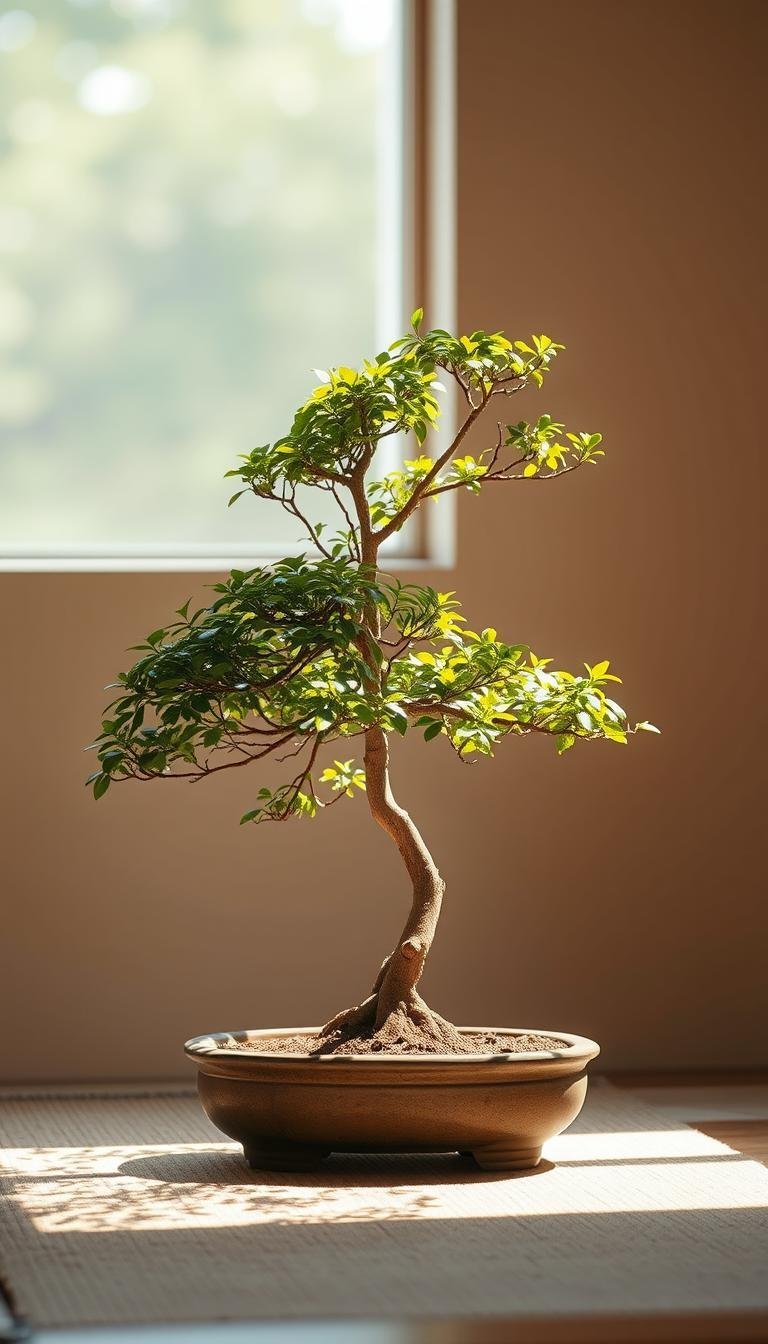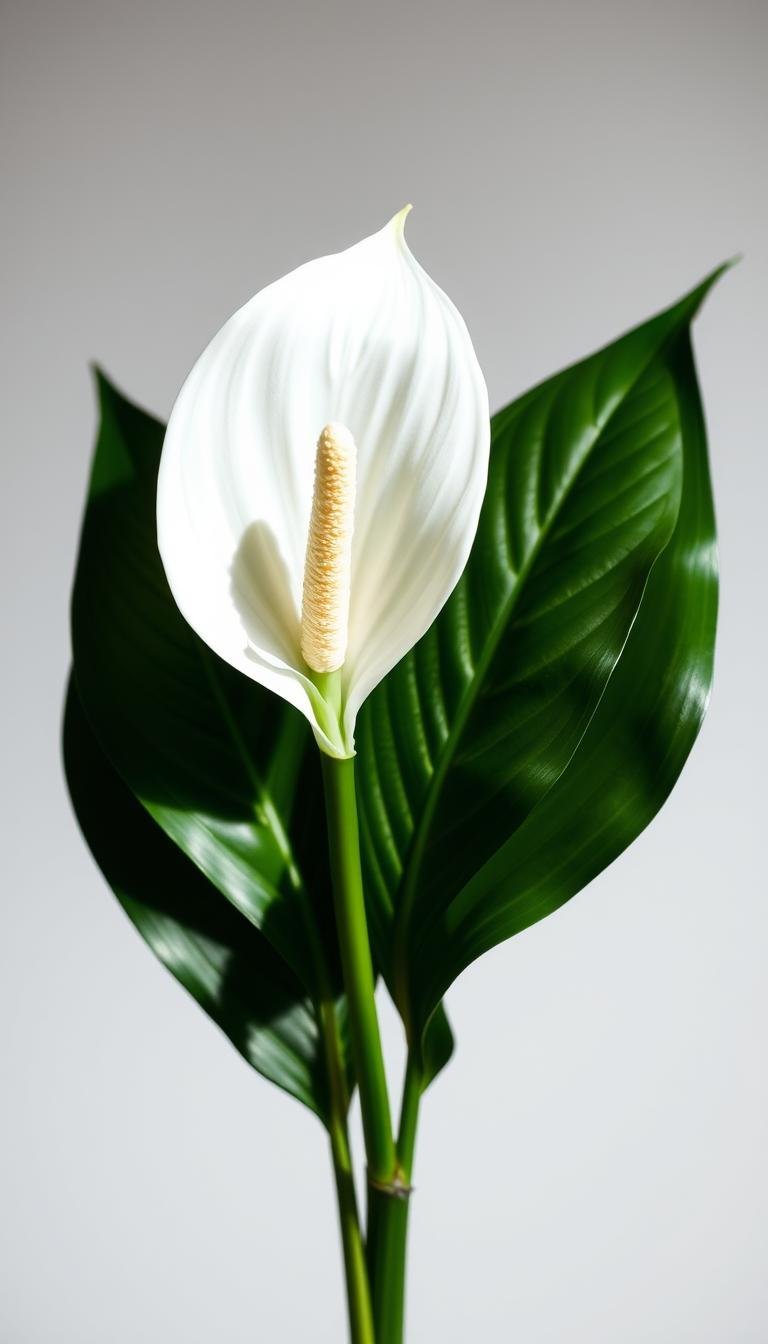This post may contain affiliate links. If you click and buy, we may earn a small commission at no extra cost to you. Learn more.
Make your balcony a vibrant spot with colorful flowers. Even tiny areas can become lush gardens. This guide will help you create a beautiful balcony garden.
Find flower ideas that fit your climate and taste. Learn about sun-loving and shade plants. Get tips on arranging containers for the best look.
Start small, no matter your gardening skill. Choose flowers that attract bees and butterflies. They’ll also make your air cleaner and bring you joy every day. Turn your balcony into a serene spot with changing colors and life.
Contents
- 1 Why Balcony Flowers Are Essential for Your Outdoor Space
- 2 Choosing the Right Flowers for Your Balcony
- 3 Popular Balcony Flower Varieties to Consider
- 4 Creating a Balanced Flower Arrangement
- 5 Tips for Container Gardening on a Balcony
- 6 Maintenance Tips for Healthy Balcony Flowers
- 7 The Role of Decor in Flower Displays
- 8 Seasonal Flower Care for Balconies
- 9 Eco-Friendly Practices for Balcony Gardens
- 10 Inspiring Balcony Flower Designs
- 11 Resources for Balcony Flower Enthuisiasts
Why Balcony Flowers Are Essential for Your Outdoor Space
Turning your balcony into a garden is more than just making it look good. Balcony plants bring many benefits, from lifting your mood to boosting your health. They turn small areas into lively spots.
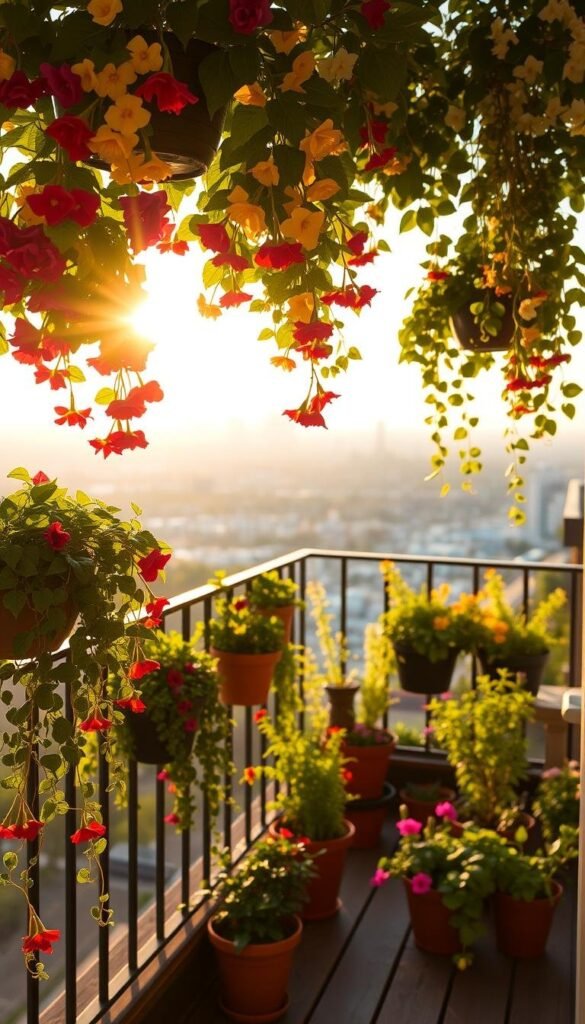
The Benefits of Flowering Plants
- Gardening reduces stress by connecting you to nature.
- Watching plants grow gives a sense of accomplishment.
- Flowers release oxygen, creating a natural therapy session in your own space.
Aesthetic Appeal and Color
Flowering plants make your home look better. Pick bright colors like red geraniums or soft petunias to show your taste. You can mix colors for patterns or go for one color for a calm look.
These gardens also draw in butterflies and other pollinators. This adds life to your balcony.
Enhancing Air Quality
City areas often lack green spaces, but balcony gardens help. They clean the air by taking in pollutants and giving out oxygen. Even small gardens can make indoor air better when windows are open.
Choose plants like peace lilies or spider plants for the best air cleaning.
Choosing the Right Flowers for Your Balcony
Turning your balcony into a garden is all about picking the right plants. Each flower has its own needs. Make sure they match your space for lasting beauty. Start by understanding your local climate and how it affects growth.
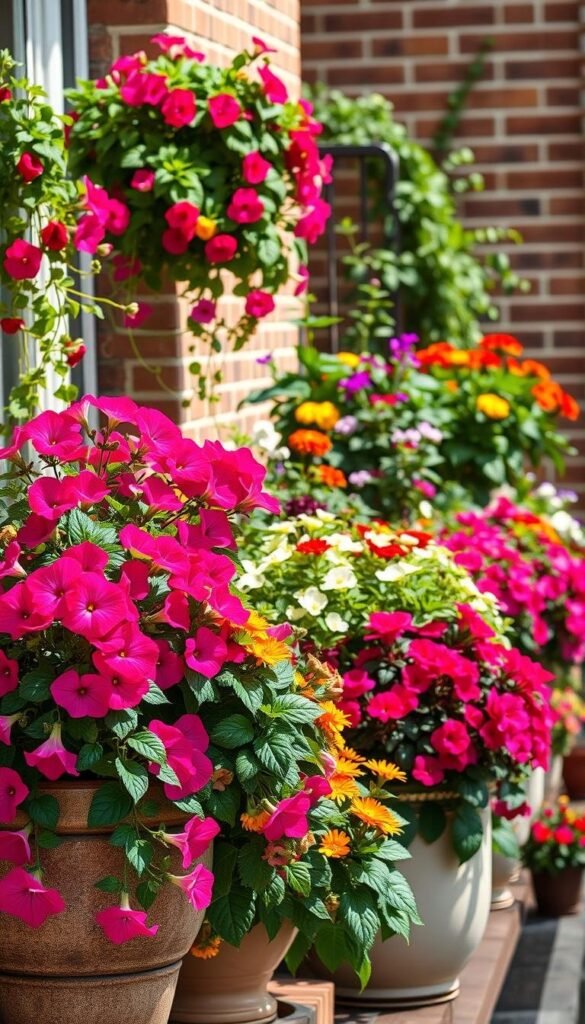
Climate Considerations
Look up USDA hardiness zones to find best flowers for balcony for your area. Geraniums do well in zones 9-11, while pansies can handle cooler weather. Think about wind and humidity too. Succulents like dry air, while ferns need it moist.
Sunlight Requirements
- Full Sun (6+ hours): Marigolds and zinnias love bright light.
- Partial Shade (3-6 hours): Impatiens and begonias do well here.
- Full Shade ( Choose fuchsias or coleus for low-light spots.
Container Size and Style
Pick balcony flower pots that fit your plants’ root spread. Small plants like petunias need 12-inch pots. Larger ones, like roses, require 18-inch containers. Go for glazed or terracotta for looks and drainage. Self-watering pots are great for those who are always on the go.
Popular Balcony Flower Varieties to Consider
Looking for balcony flower ideas? These best flowers for balcony bring color and ease to small spaces. They fit any balcony, from sunny to shaded. Let’s look at three top picks.
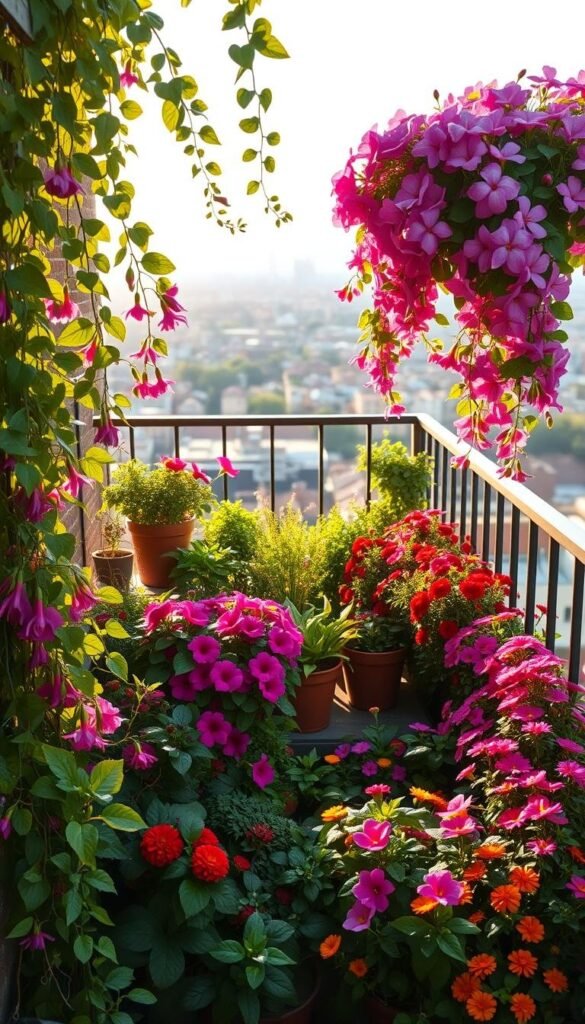
Petunias for Vibrant Color
Petunias add bold colors to your balcony. They come in grandiflora (big blooms) and multiflora (smaller flowers) that bloom all summer. They love full sun and look great in hanging baskets or window boxes. For a cascading look, choose trailing varieties.
Geraniums for Easy Care
Geraniums are a top choice for balcony gardens. They are drought-tolerant and low-maintenance, blooming from spring to fall. Their strong stems handle wind, and they prefer well-drained soil. Water them when the soil feels dry—they’re great for busy gardeners.
Fuchsias for Shaded Areas
Shaded balconies? Fuchsias are perfect for them. Their cascading blooms in pink and red do well in part shade. They thrive in hanging pots and need regular watering. As one expert says:
Fuchsias turn shady spaces into lush displays with little care.
Pinch tips to encourage bushier growth.
Creating a Balanced Flower Arrangement
Turn your balcony into a lush garden with balcony flower arrangement. A good design is not just pretty—it brings balance to your space. Begin by mixing bold and soft elements to prevent clutter.

Mixing Colors and Textures: Combine delicate petals with shiny leaves or fluffy grasses for contrast. Choose calming colors like purples and blues, or bright reds and yellows for energy. Plants like lavender and ornamental kale add texture without taking over.
- Thriller: Pick tall plants like dracaena or fountain grass as main attractions.
- Filler: Use medium-height flowers like pansies or daisies to fill in.
- Spiller: Add plants like creeping thyme or lobelia to soften edges and spill over pots.
Seasonal Planting: Change up your balcony flower design with the seasons. Plant spring bulbs like tulips in early March, then switch to sun-loving marigolds in summer. Add autumn mums before winter hardy cyclamen. Make sure plants fit your climate by checking USDA zones.
Balance is everything—try different container sizes and group plants in odd numbers for a natural look. Change your layout with the seasons to keep things fresh and colorful.
Tips for Container Gardening on a Balcony
Container gardening turns your balcony into a lush oasis. Begin by picking the perfect containers for your plants.
Selecting the Right Containers
When choosing balcony flower pots or balcony flower boxes, material is key. Terracotta is breathable but heavy. Plastic is durable and budget-friendly. Ceramic adds style, while metal brings a modern touch.
Fabric pots improve root health, and boxes group plants neatly. Be mindful of weight limits—some balconies can’t handle heavy pots.
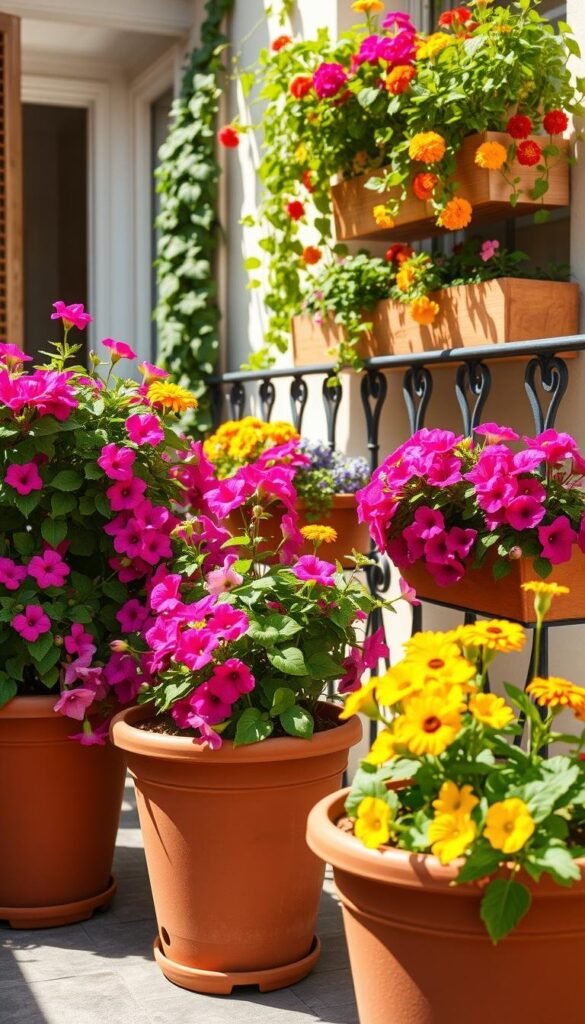
Soil and Drainage Solutions
- Choose premium potting mix for better drainage than garden soil.
- Place gravel or perlite at the bottom to prevent waterlogging.
- Drill more drainage holes if your soil gets too wet—wet roots are bad.
Watering Techniques
Watering is an art! balcony flower pots dry out quicker than garden soil. Here’s how to do it right:
- Use self-watering containers for steady moisture.
- Check with moisture meters to avoid too much water.
- Adjust your watering schedule—more in summer, less in winter.
Small changes can make a huge impact. Happy planting!
Maintenance Tips for Healthy Balcony Flowers
To keep balcony garden plants thriving, you need to care for them regularly. Follow these steps to keep your blooms vibrant and healthy all season long.
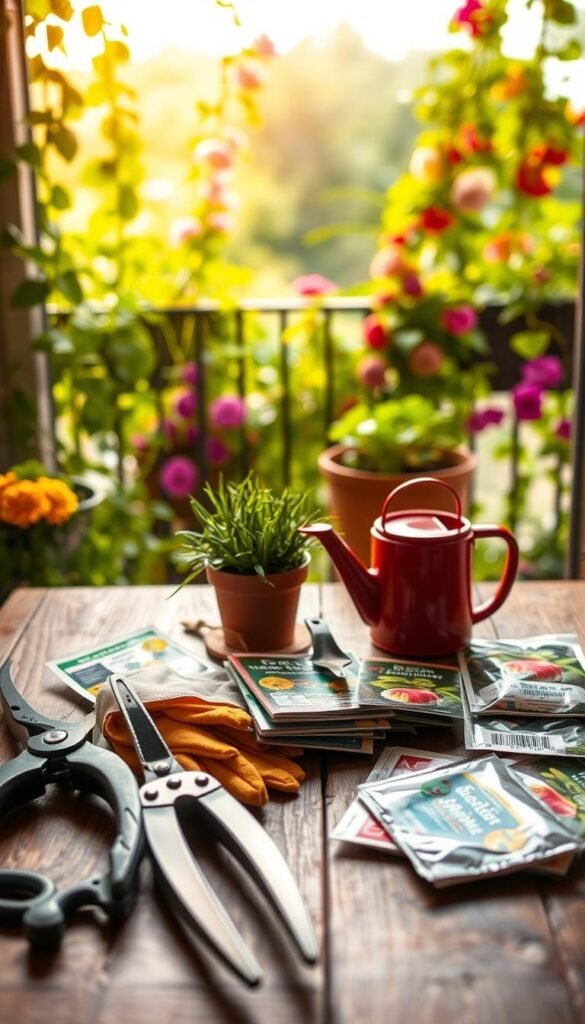
Fertilizing and Nutrition
Container-grown balcony garden plants need nutrients from you. Use slow-release granules or diluted liquid feeds every 4-6 weeks when they’re growing. Tip: Look for fertilizer labels that say they’re good for flowering plants and are rich in phosphorus.
- Spring: Start with balanced 10-10-10 fertilizer at planting
- Summer: Switch to high-phosphorus 14-30-14 during bloom phase
- Fall: Discontinue feeding as plants enter dormancy
Pruning and Deadheading
Regular pruning keeps plants compact and blooming longer. Remove faded flowers (deadheading) right away to help new growth. Pinch back leggy stems of petunias and fuchsias to make them bushier.
Pest Control Solutions
Check plants weekly for signs of pests. For aphids or spider mites:
- Use a strong water spray to dislodge pests
- Apply neem oil or insecticidal soap solutions
- Introduce ladybugs as natural predators
Prevent recurring issues by keeping foliage dry during watering and cleaning debris regularly.
The Role of Decor in Flower Displays
Turn your balcony into a beautiful outdoor space with balcony flower decoration. The right decor makes your space both beautiful and functional. It lets your personal style shine. Start by choosing elements that match your plants and enhance your living area.
Choosing Decorative Pots
Containers set the mood for your balcony flower design. Mix materials like ceramic, metal, or terracotta to fit your style. Sleek black pots are great for modern looks. Rustic themes do well with weathered wood or stone.
Pro tip: pair bold-colored pots with neutral blooms for contrast.
- Modern: Geometric shapes, metallic finishes
- Rustic: Wicker or reclaimed wood
- Bohemian: Hand-painted or mosaic designs
Adding Trellises and Supports
Vertical structures make the most of small spaces. Twine climbing plants like clematis or jasmine around metal arches. A bamboo trellis with trailing petunias adds privacy.
Use lattice panels to frame seating areas with cascading flowers.
“A well-placed trellis turns a blank wall into a living canvas.” – Urban Gardening Magazine
Incorporating Garden Furniture
Choose furniture that’s lightweight and weather-resistant. It should match your plants. A wicker chair near fragrant lavender pots or a metal bistro set beside a trailing fuchsia display works well.
Use trailing plants to soften hard surfaces. Think ivy spilling from hanging baskets near seating.
Balance is key. A small table with a potted orchid becomes a focal point. Layer planters at different heights to guide traffic flow and create cozy zones.
Seasonal Flower Care for Balconies
Seasons change, and so does the care for balcony flower boxes. Gardeners adjust their care to keep plants blooming all year. This way, they handle every climate shift with ease.
Spring Planting Tips
- Watch for frost dates—plant hardy plants like pansies when it’s over 40°F.
- Update your flower boxes with new soil and drainage gravel before planting.
- Slowly introduce greenhouse plants to outdoor weather to prevent shock.
Summer Maintenance Needs
Summer brings hot days. Water your plants every day, best in the morning or evening. Use pots that water themselves to keep soil moist. If you’re away, ask a neighbor to water or set up a drip system.
Feed your plants with balanced fertilizer every 4 weeks. This helps them keep blooming.
Preparing for Fall and Winter
When it gets colder, switch to plants that like cooler weather like mums or cyclamen. Move sensitive plants inside or to greenhouses. Clean your containers and use mulch that won’t freeze to protect roots.
In USDA zones 8+, some plants can survive winter with frost cloth. This keeps them safe from harsh weather.
Eco-Friendly Practices for Balcony Gardens
Small spaces can make a big difference. Turn your balcony into a green oasis with these eco-friendly tips. Every choice you make helps the planet and keeps your plants healthy.
Organic Gardening Techniques
Grow flowers without chemicals. Use compost tea weekly for natural nutrients. Keep pests away with neem oil sprays or ladybugs. Stay away from synthetic fertilizers to protect our waterways.
- Compost tea: Brewed from kitchen scraps
- DIY pest repellent: Mix garlic spray for aphids
- Biodegradable pots reduce plastic waste
Native Plant Selection
Choose native flowers to support local ecosystems. These plants need little care and feed pollinators. Here are some regional picks:
- Northeast: New England aster
- Southwest: Desert marigold
- Pacific Northwest: Western trillium
These plants use 50% less water than non-native species.
Rainwater Harvesting Ideas
Collect rain to water your plants naturally. Here are some ideas for small spaces:
- Mini rain barrels under eaves
- Rain chains directing water to pots
- Self-watering containers with drip systems
Harvested water keeps plants hydrated during dry times.
Inspiring Balcony Flower Designs
Turn any small balcony into a lively spot with new flower design ideas. Use vertical, compact, or edible plants to make unused areas bloom.
Every balcony tells a story—let your plants be the words.
Vertical Gardens for Small Spaces
Use hanging baskets, wall planters, or tiered stands to make the most of vertical space. Trailing petunias look great in hanging pots, and climbing roses add height. For shady areas, ivy geraniums in hanging pots are perfect.
Creative Arrangements in Limited Areas
- Rail-mounted planters fit narrow spaces
- Stacked planters create layered looks without extra floor space
- Mix containers of varying sizes for dynamic layouts
Incorporating Edible Flowers
Make your balcony both beautiful and tasty with edible flowers. Nasturtiums add a peppery taste to salads, and pansies are great for desserts. Lavender is perfect for its scent and in tea. Mix edible flowers with decorative ones for a balcony that’s both pretty and practical.
Get inspired by these balcony flower ideas. Start with one new thing each week. Watch your balcony come to life.
Resources for Balcony Flower Enthuisiasts
Every balcony garden journey grows with knowledge. These resources offer fresh ideas and support to keep your plants thriving. Whether you’re seeking inspiration or troubleshooting tips, these tools provide the next steps to deepen your skills.
Top Gardening Books and Magazines
Books like Container Gardens by the Numbers by Ortho and Balcony Gardens: Design, Plant, Enjoy by Celia Davies offer practical guides to small-space blooms. Magazines such as Fine Gardening and Garden Design feature monthly articles on choosing balcony flowers and seasonal care. Online, the American Horticultural Society’s website provides free guides on soil mixes and pest control for containers.
Online Communities and Forums
Join Facebook groups like Urban Balcony Gardeners or Reddit’s r/ContainerGardening for real-time advice. Instagram accounts like @containergardening_pro and @urbanplantlife share daily tips on light management and plant pairings. YouTube channels such as “balcony_garden_diaries” host tutorials on vertical setups and winter care. These communities thrive with shared experiences and problem-solving threads.
Local Garden Centers and Nurseries
Local nurseries like Bachman’s (Minnesota) or питомник White Flower Farm offer expert advice on region-specific plants. Ask staff about drought-resistant varieties for your climate. Check websites like FindGardenCenters.com to locate nearby stores with balcony gardening sections. Many centers host workshops on soil pH testing or pest-safe fertilizers for small spaces.
To bring you cozy inspiration more efficiently, we sometimes use AI to assist in content creation — but every word and idea is carefully shaped by our team. See our AI Disclosure for more info.

